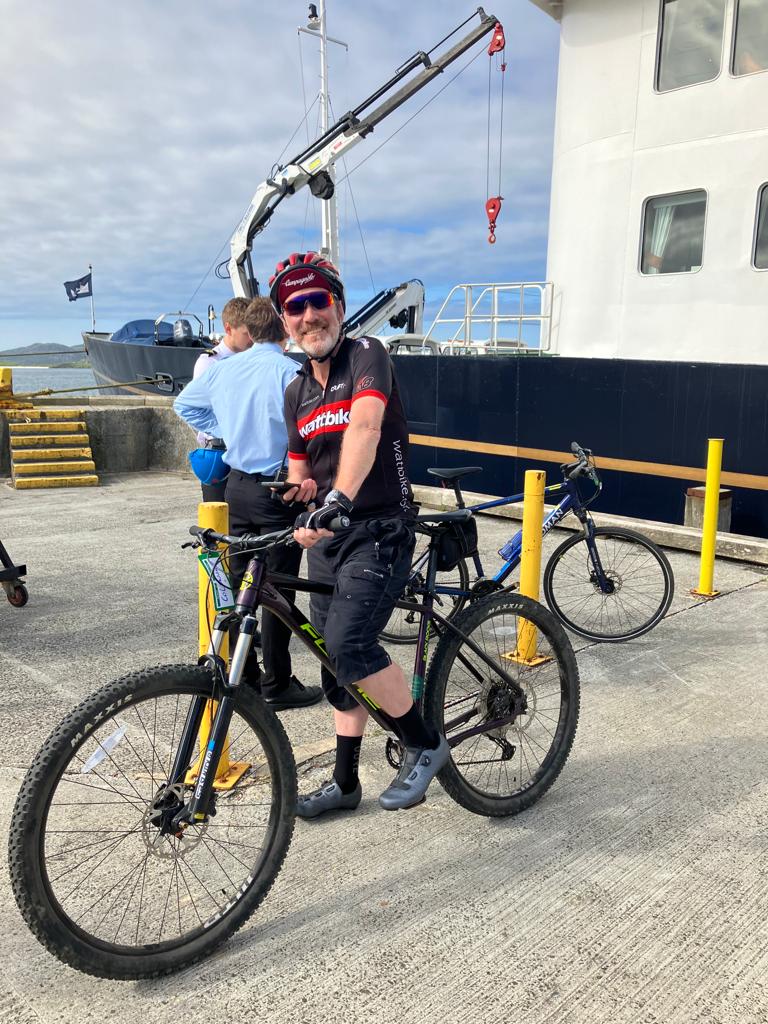
Timothy Powell
Friday 27th October 2023
In 2014, Timothy Powell was treated for mitral valve disease after being diagnosed at a routine health check. As Timothy approaches the 10-year anniversary of his surgery, he reflects on his post-treatment journey.
You may be wondering about the title of my article, which is intended to cover my experience in the (nearly) ten years since I underwent mitral valve repair at Papworth Hospital in 2014. It refers to something mentioned by one of the doctors, to the effect that the Gore-tex put into my heart to replace the chordae tendineae (colloquially, the “heart strings”) has a useful life of about 150 years. I have since then been quite reassured that at least a bit of my heart is going to go on for a very long time indeed, and when you look into it, you find that valve repair, if carefully managed, can restore you to a completely normal life expectancy.
But back to why I am writing this piece. As I say, I was lucky enough to undergo mitral valve repair surgery after getting the shock of my life earlier in 2014 in the form of a diagnosis of degenerative mitral valve incompetence. This article will not be a repeat of the run-up to surgery as I previously produced a Patient Story explaining all that; but I should mention that before the diagnosis, I had always done my best to remain as fit and active as possible, as a cyclist and practitioner of functional bodyweight training. I recently felt it would be useful to record how things had changed in terms of my levels of activity and, just as importantly, my confidence when exercising following the surgery and rehabilitation.
Well, the “spoiler alert” is that I am more active now than at any time since my late twenties; I have taken up the new disciplines of long-distance hiking and sportive cycling; I lost a few kg of the padding I had been acquiring in my middle years; and I even treated myself to a fancy new bicycle into the bargain.
The immediate aftermath of valve surgery is an uncertain time. Questions crowd your mind, often related to how long one is going to survive and what the quality of life is going to be. In particular, if you are used to an active lifestyle, it is easy to think your fitness levels are going to reduce and that the joy of exercising outdoors may be taken away from you.
In my case, the surgery and immediate aftermath were practically pain-free, and this meant I could resume a level of exercising immediately after leaving the hospital (in turn, about four days after the surgery). It was strongly recommended that I walk 2 – 4 miles a day in order to minimise the risk of a stroke. Walking on medical advice does wonders for your confidence!

I was lucky to have a devoted friend living nearby who joined me on my walks, and before long, we were greatly exceeding the recommended range without problems.
Gradually, my range of movement increased, and I began using weights. I was very lucky to have an extremely knowledgeable personal trainer who was able to devise a rehab-friendly programme (initially using very light weights indeed and chiefly leg and core work). This also helped to provide reassurance that things were under the scrutiny of a third-party expert.
Shortly after the surgery, a very close friend proposed that we do the Coast-to-Coast walk, and that was the start of my love affair with long-distance hiking. It rained for 11 days out of the 13 we spent walking from Cumbria to East Yorkshire, but I finished the route, wishing to do the whole thing again straight away. I have memories from that walk that will last a lifetime, and we organised several more long-distance walks after that.
A few years after the surgery, I increased the amount of cycling I was doing. I decided to treat myself to a bicycle that was a better fit for my body frame than the one I was using. It was built in a bike shop down South. Unfortunately, its completion coincided almost exactly with the COVID pandemic, lockdowns and all the changes in life we have endured since then, but this gave me the chance to follow a sportive training programme on an indoor bike and prepare myself for longer distances on the bike than I had previously completed.
By the time I eventually took delivery of my bike, I had built up my endurance to let me comfortably complete the middle-distance rides in sportive events. In other words, I have no problems at all cycling 80 – 100 km in one go with, say, 500 m of ascent, which in the case of most sportives equates to a morning on the bike. I try now to do at least two sportive events each summer and, in a good year, manage three or four. I have never encountered any physical problems at all and simply finished these events tired, happy and, in the case of the Bike Chester event this year, spattered with slurry from a flood en route. What’s more, I usually enjoy a pint in a pub afterwards and rarely do drinks taste better.
So, to sum up, if you enjoy exercise and have the bad luck to receive a valvular heart disease diagnosis, take heart! As I hope I managed to demonstrate, it is possible to resume and even increase your fitness levels after valve surgery, and with every increment of improvement in your fitness, your confidence in the ability of your heart goes up too.
I wish everyone about to go on a heart valve journey the best of luck, strength to cope with any dark days, and a long and active life once the bones have healed.


